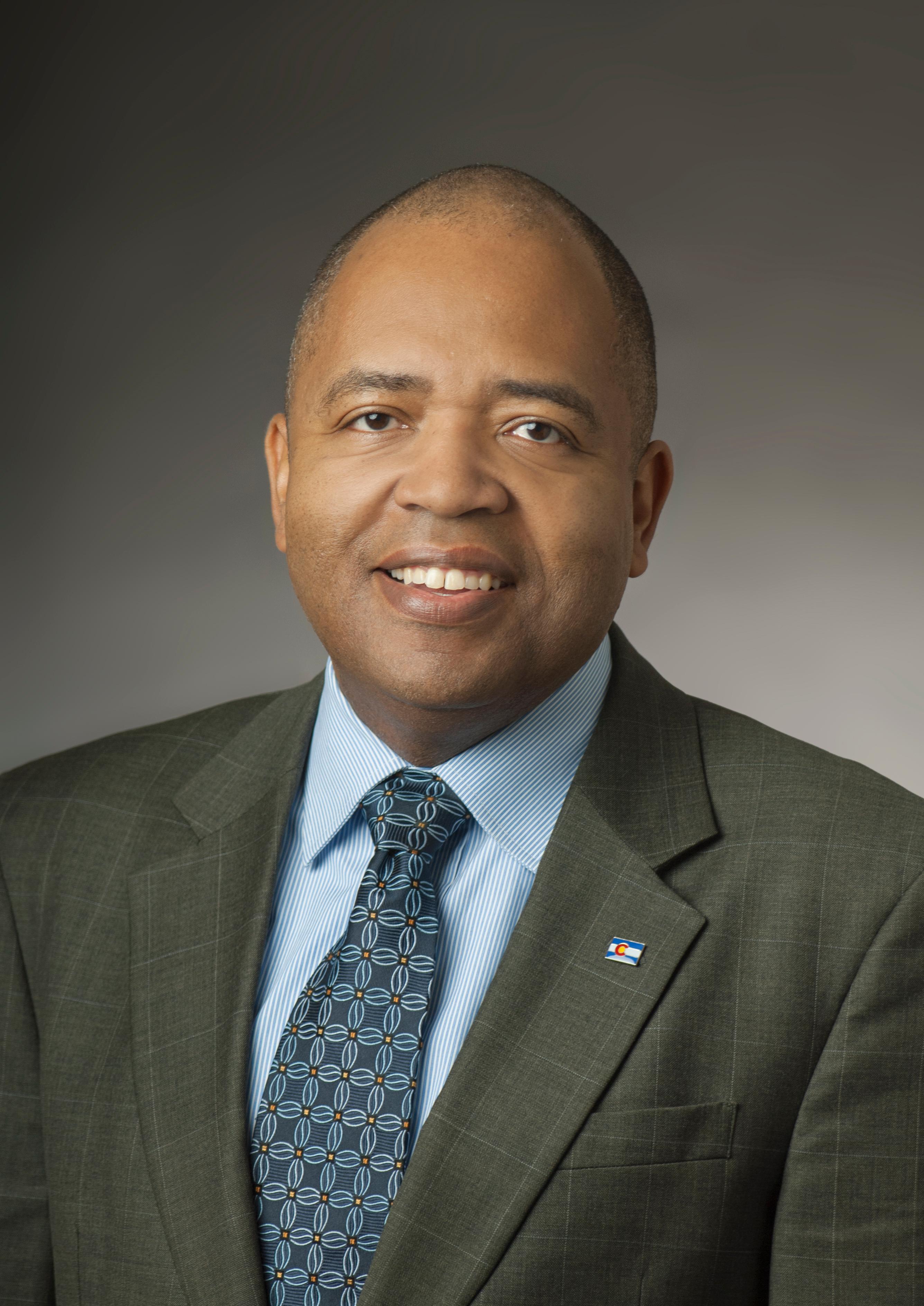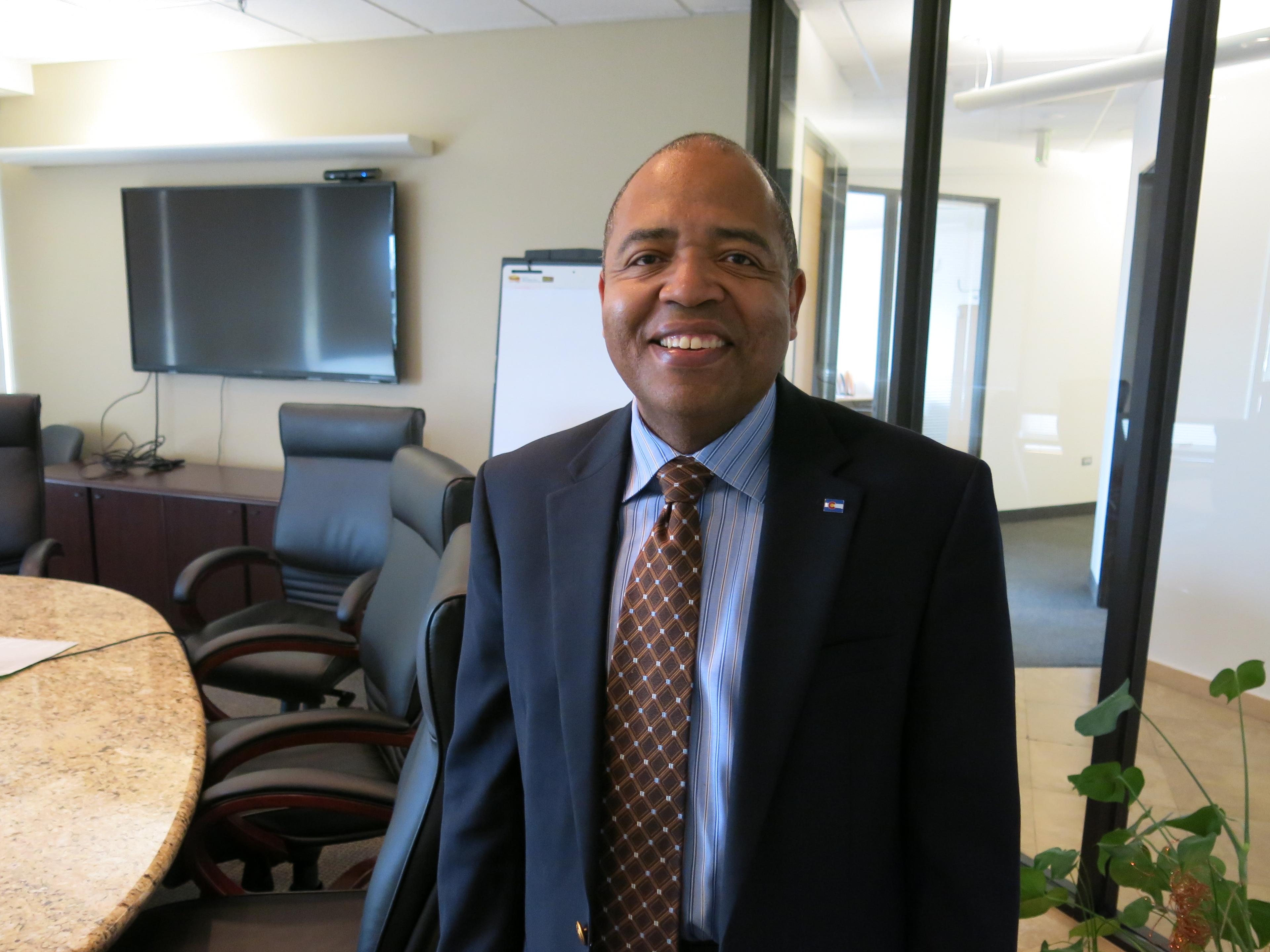

Open enrollment, the annual period when people can choose a health care plan, begins next week. But this year what is already a bewildering process for some people has become even more uncertain because of Washington politics and proposed changes to the health care system.
President Trump has signed an executive order that directed federal agencies to pursue changes to the health care system, including the elimination of cost-sharing reductions known as CSRs, which are subsidies to insurance companies to help lower cost for low-income people purchasing insurance.
Kevin Patterson, CEO of the state's health care exchange, Connect for Health Colorado, told Colorado Matters the agency is prepared to handle such changes.
Meanwhile, Democratic Sen. Patty Murray of Washington and Republican Sen. Lamar Alexander of Tennessee have proposed a bipartisan plan that would keep the CSRs and give states some flexibility in providing coverage for their citizens. This summer, Colorado Gov. John Hickenlooper, a Democrat, and Ohio Gov. John Kasich, a Republican proposed a plan to stabilize the insurance market.
What does the end of so-called cost sharing reductions mean for people who buy their insurance through the Exchange?
"I think the simplest way to explain it is, it's instead of it coming through the federal government for the cost share reduction, it's now baked into the rate. So that assistance will still be there and available for folks that fit that cost share reduction profile and they will be able to get the assistance, it's just now will be paid through the rate payers in Colorado versus the federal government," Patterson said.
Read The Transcript
Open enrollment under the Affordable Care Act starts next week. It's a critical time for people who buy their own insurance and for those who get a subsidy. This is also an uncertain time for Obamacare itself, with President Trump committed to fulfilling his promise of undoing it. Kevin Patterson, CEO of the state's exchange, Connect for Health Colorado, joins us to talk about these and other issues. Connect For Health is where about 200,000 Coloradans get their health insurance. Ryan Warner: Let's start with the president's decision earlier this month to stop payments to insurance companies. These payments bring down deductibles and co-pays for low income people. We're talking billions of dollars here. What does the end of so-called cost sharing reductions mean for people who buy their insurance through the Exchange? Kevin Patterson: Well, I really appreciate that question. I think the simplest way to explain it is, it's instead of it coming through the federal government for the cost share reduction, it's now baked into the rate. So that assistance will still be there and available for folks that fit that cost share reduction profile and they will be able to get the assistance, it's just now will be paid through the rate payers in Colorado versus the federal government. RW: That is to say other insured people will absorb that cost for those low income people, or those low income people can expect that their insurance will increase as well? KP: No, what they will see, everybody pays for it through the rate so it's normalized over the entire rate based system. RW: What does that mean for the cost of insurance in Colorado? KP: For us, what it meant was we had to change the rates last week with the help of the Division of Insurance. It was an additional six percentage points that the rates were raised to fund the cost share reductions at a state base level. RW: Okay, 6% more expensive for insurance in Colorado. Is that right? KP: Correct. RW: To be clear, that is borne by everyone across the board, even those who benefit from CSRs? KP: It's on average- RW: On average. KP: ... but it is across. RW: That is a direct effect of the president's decision to end those payments? KP: Correct. RW: Can you say what 6% means on average for someone who's insured on the Exchange? KP: It becomes a percentage of a percentage, so it's a difficult thing to explain, but let me say it this way, because the cost share reduction came in and rates go up, that also means the Advance Premium Tax Credit goes up. So what we are looking at now, is we've looked at reports that are coming from Division of Insurance and looking at the Wakely Report they call it, and we know that the second lowest cost silver, which is where we kind of level set everything- RW: A silver plan is the middle of the road plan. KP: The silver plan, yeah. That has increased by average of 29%. That will mean that there will be an additional $216 per month for the Advanced Premium Tax Credit on average for folks to share. RW: You're saying that that's not necessarily coming out of people's pockets directly, because the federal subsidies will help defray some of that cost? KP: Exactly. RW: If you qualify for them. KP: That is the big part of it. If you're between 200% and 400% of poverty, it's great. If you're above 400%, it is a larger cliff for you this time. RW: That's right. There's not as much or any federal support for your increases there. KP: Exactly. RW: So that is how rates could both be increasing and yet people's out of pockets decreasing, because the federal subsidies play a role here. KP: Yes. RW: In August, the Trump administration said it was cutting the Affordable Care Act's advertising budget by 90%. Also, for 35 states, including Colorado that use the federal website in addition to perhaps their own state website, so healthcare.gov, the open enrollment period has been cut from three months to six weeks. What is the effect in Colorado of something like that? KP: We do actually have a little bit of a buffer. As a state-based marketplace we can make decisions around what our open enrollment period looks like. So what we've done is, now we still have November to December 15th for folks that want their coverage to start January 1st, but we're able to continue our open enrollment until January 12th and they will be able to start their coverage February 1st. So that gives folks those additional weeks to sign up for health insurance. RW: More flexibility on the State Exchange than if you go through healthcare.gov. KP: Exactly. The second point is around the advertising. As a state-based marketplace, what we saw last year, because we're not on healthcare.gov, we have our own website, we saw just the announcements of the open enrollment dates. They typically were on large national platforms, NFL games typically or when people would see them. That part is what is my understanding still will be there, but since we didn't really have the federal advertisements last year we're doing a lot more on the ground, and so we will go through local community papers, do radio like we're doing here. Those are the ways that we get our message to our enrollees. RW: Do you think fewer people will be aware of the message this year? KP: Boy, it's hard to handicap. I think the confusion is what worries me more than the message is that they won't be able to figure out what the message really is. And so for us, our mission- RW: But then folks might be hesitant to sign up for insurance because they see so much uncertainty? KP: Well, we thought we would've saw it last year, where people got really nervous, and they were like, "Oh, the Affordable Care Act is gone." And we actually saw an increase in enrollment. And so, I think there's a little bit of fear in people that are saying, "Well, I better sign up while I still can." So, we're hoping that will get people to continue to enroll, but I think we also are concerned about rates going up, will you price people out of the market. So those are the two factors that concern us, and it's hard to say exactly how it's gonna go, but we have assumed flat enrollment for our budget. RW: Ah. Interesting. Okay. This is Colorado Matters. I'm Ryan Warner, and we're speaking with Kevin Patterson. He's CEO of the state's health care Exchange, Connect for Health Colorado, where about 200,000 Coloradans get their insurance. We're speaking ahead of open enrollment next month. Pardon me, next week, well, which is next month. Those are both true statements. KP: Exactly. RW: I want to note that at the end of September, federal funding expired for the Children's Health Insurance Program, or CHIP, in Colorado. That program here covers about 75,000 children, and 800 pregnant mothers. If they lose that coverage, would they qualify at the same price for insurance through the exchange? KP: They qualify, the price would be what would be different for them. RW: Higher, most likely? KP: Yeah. CHIP covers a lot more of the out-of-pocket costs and things that typically keep them from accessing care. And then there's the monthly premium be different for them because it's more of a Medicaid payment process versus on the qualified health plan, which is what typically people see in private insurance. RW: Do you expect folks who are covered by CHIP right now to migrate, start migrating to the Exchange? KP: Yeah, I think that we do expect that. We have increased our capacity just in case that actually does happen. But we're just concerned because we know that the price point might keep them from actually accessing the care even though they qualify. RW: Because it's going to be more expensive. KP: They will have more out of pocket costs, that is true. RW: That is if the CHIP program is not extended, if the funding for it isn't extended in Washington. KP: Correct. RW: Which remains a question. Last Friday you sent an email to stakeholders with the subject line, "A few things are clear in Colorado." What are you certain of right now? KP: We're still here. I think that's the part that is ... just want to make sure folks are there, at least we know- RW: Your mere presence is the only certainty. KP: That's what I can control. I don't get upset about the weather, and I don't get upset about public policy in Washington, DC. I think we're trying to do is just stay focused to make sure that we're serving our citizens, serving our clients, making sure folks have access to the programs where they qualify. As I've said to folks in every corner of the state, we are still the federal law of the land. We will continue to move forward, making access, affordability, and choice, those things are important for our mission, and we'll continue to do that. RW: Affordability, though, is in question at this moment. KP: It is. It's always a big issue in health insurance, and for us, again, one of our main purposes is to make sure that we're administering the tax credit. And for folks that qualify for it, these rate increases are mitigated in a lot of ways because of that tax credit, and so we just want to make sure that folks aren't leaving money on the table. And while they hear all of this affordability, all these things that are out there, the confusion, we just want them to make sure they come in, stop for a moment, shop for the services that we have, and see if they can enroll. RW: Do you find that there are many people who don't realize they're eligible for help? KP: We have survey data that people overestimate, underestimate, rather, the qualifications. They think that they would make half of what they actually qualified for. So folks typically think you need to be making $40,000 a year to qualify as a family of four, where it's actually over double that. And so what we want to make sure people do is come in and look to see if they qualify. RW: So, on Sunday, Senate Majority Leader Mitch McConnell said he would bring a bipartisan healthcare bill sponsored by Senators Lamar Alexander of Tennessee and Patty Murray of Washington to the Senate floor, if "I know President Trump would sign it." The proposal would keep those cost sharing reductions which bring down the cost of co-pays and deductibles for low income folks. What is the flow of healthcare information right now between Washington and Colorado? Like how quickly are you apprised of the ebbs and flows? Because that flow has since ebbed by the way. KP: That's a good way to say it. So there's constant communication between our office, our federal partners, we also are part of an association of health plans and other exchanges that have a lobbying presence in DC because it changes so quickly we felt like we needed to know exactly what those conversations are happening. I've been to Washington more times than I want to admit because you just have to be there to actually be in that conversation. So it's taken a lot of time but I think it's really important right now. RW: I've asked you this before but to wrap up, will there be a need for the Exchange after this year? KP: I certainly see a larger need actually and I think what we're trying to get to is health literacy on top of health affordability. So from my perspective, I actually see that we have a an important role to play, working with our communities to do the things that work for them and the folks that live in Colorado. So from every corner of the state I think we have a role. RW: Thanks for being with us. KP: Thanks for having me. RW: Kevin Patterson is CEO of Connect For Health Colorado, the state's insurance Exchange. He joined us ahead of open enrollment which begins next week. |









